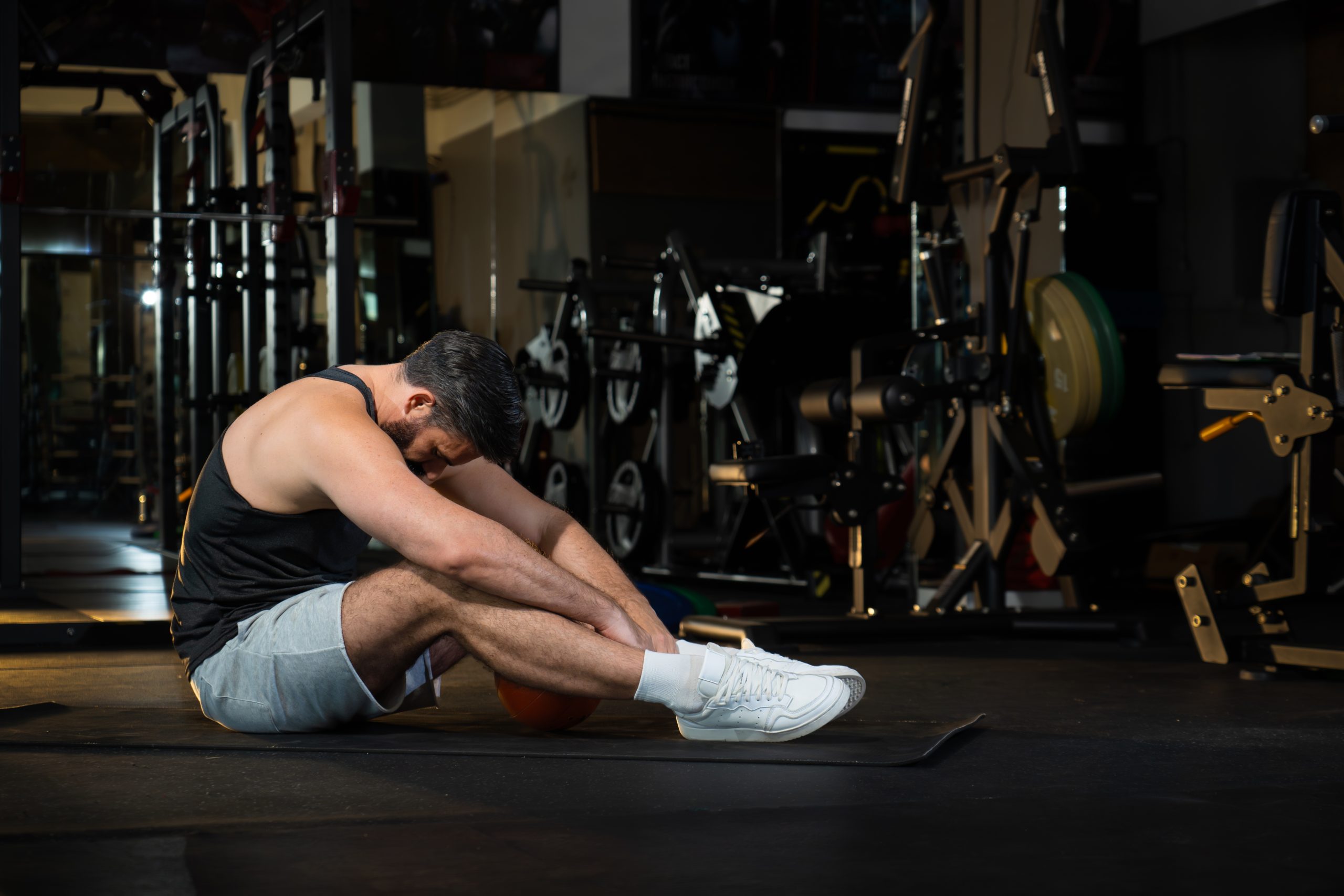For fitness enthusiasts who are passionate about achieving their health and fitness goals, the temptation to push harder, train longer, and skip rest days can be strong. However, neglecting workout recovery can hinder your progress and lead to serious setbacks. We dive into why recovery is essential, the science behind it, and the consequences of insufficient rest.
Why Recovery Matters
Recovery is more than just a break from exercise; it’s a crucial component of any workout plan. During intense physical activity, your muscles endure stress and microscopic tears. Recovery allows your body to repair these tears, rebuild stronger muscles, and restore energy levels. Without sufficient recovery, you may face diminished performance, fatigue, and even injury.

The Role of Recovery in Muscle Growth
Muscle growth, or hypertrophy, occurs when muscle fibers repair and grow after being broken down during exercise. This process relies on two key factors:
- Protein Synthesis: Recovery facilitates the repair of muscle fibers through protein synthesis, which builds stronger, leaner muscles.
- Hormonal Balance: Rest days help regulate hormones like cortisol (stress hormone) and boost anabolic hormones like testosterone and growth hormone, both essential for muscle repair and growth.
Energy Restoration
Your body relies on glycogen—stored carbohydrates—for energy during workouts. After intense training, glycogen stores deplete. Rest days allow your body to replenish these reserves, ensuring you have the energy needed for your next workout.

Consequences of Skipping Rest Days
While consistent workouts are essential for progress, skipping rest days can lead to several negative outcomes. Here’s what happens when you don’t allow your body the time it needs to recover:
1. Overtraining Syndrome (OTS)
Overtraining syndrome occurs when the body is subjected to excessive stress without adequate recovery. Symptoms include:
- Chronic fatigue
- Persistent muscle soreness
- Decreased performance
- Increased risk of injuries
- Mood disturbances like irritability or depression
2. Increased Risk of Injury
Without rest, your muscles, tendons, and joints don’t get a chance to recover fully. This increases the risk of:
- Tendonitis
- Stress fractures
- Muscle strains
- Joint pain
3. Plateaued Performance
Continuing to train without rest can lead to diminishing returns. You may find that despite working harder, your strength, endurance, and overall performance stagnate or even decline.
4. Weakened Immune System
Intense physical activity without adequate recovery can suppress the immune system. This makes you more susceptible to colds, infections, and other illnesses.
5. Mental Burnout
Skipping rest days doesn’t just take a physical toll; it also impacts mental health. Over time, you may lose motivation, feel mentally drained, and develop a negative relationship with exercise.

Signs You Need a Rest Day
It’s crucial to listen to your body and recognize the signs that you need to take a break. Here are some common indicators:
- Persistent muscle soreness beyond 48 hours
- Fatigue that doesn’t improve with sleep
- Poor workout performance
- Increased irritability or mood swings
- Elevated resting heart rate
Types of Workout Recovery
Not all recovery looks the same. Here are two primary types:
1. Active Recovery
Active recovery involves low-intensity activities that promote blood flow and help reduce muscle stiffness. Examples include:
- Light yoga
- Walking
- Swimming
- Stretching
2. Passive Recovery
This one is my favorite – DO NOTHING. Passive recovery is complete rest. This is when you allow your body to heal and recharge without any physical activity. This is especially important after particularly intense workouts or competitions.

Tips & Tricks Maximize Your Workout Recovery
To get the most out of your rest days, consider the following strategies:
1. Listen to Your Body
- Why it matters: Overtraining can lead to injuries, fatigue, and decreased performance.
- Tip: Watch for signs like persistent soreness, fatigue, or poor workout performance, and adjust your schedule as needed.
2. Prioritize Sleep
- Why it matters: Sleep is when your body does most of its repair and recovery, including muscle rebuilding.
- Tip: Aim for 7-9 hours of quality sleep per night. Create a consistent sleep schedule and avoid screens before bedtime.
3. Stay Hydrated
- Why it matters: Water helps flush toxins from your body, aids in muscle recovery, and maintains overall physical performance.
- Tip: Drink water throughout the day, not just during workouts. Consider electrolyte drinks if you sweat heavily.
4. Eat a Balanced Post-Workout Meal
- Why it matters: Proper nutrition replenishes glycogen stores and provides the building blocks for muscle repair.
- Tip: Fuel your body with nutrient-dense foods to support recovery:
- Protein: Essential for muscle repair (e.g., lean meats, eggs, plant-based proteins).
- Carbohydrates: Replenish glycogen stores (e.g., fruits, whole grains).
- Healthy Fats: Support hormonal balance (e.g., avocados, nuts, seeds).
- Vitamins and Minerals: Aid in muscle function and recovery (e.g., leafy greens, berries, nuts).
5. Use Proper Recovery Supplements
- Why it matters: Some supplements can aid recovery and improve muscle repair.
- Tip: Consider whey protein, BCAAs, or omega-3s to support recovery. Always consult a professional before starting new supplements.
- Recovery Supplements: Here is a list of workout recovery supplements for your plan.

6. Stretch and Foam Roll
- Why it matters: Stretching improves flexibility, while foam rolling helps release muscle tension and knots.
- Tip: Spend 10-15 minutes stretching or foam rolling after each workout or on rest days.
7. Use Workout Recovery Tools
- Why it matters: Tools like massage guns, compression garments, and ice baths can help reduce soreness and inflammation.
- Tip: Incorporate these tools as needed, especially after intense training sessions.
8. Manage Stress
- Why it matters: Stress increases cortisol levels, which can hinder recovery and muscle growth.
- Tip: Practice mindfulness, meditation, or breathing exercises to reduce stress.
9. Take Care of Your Mental Health
- Why it matters: A healthy mind is essential for consistent performance and motivation.
- Tip: Balance your fitness goals with other aspects of life, and take mental breaks when needed.
How Often Should You Take Rest Days?
The frequency of rest days depends on factors like fitness level, workout intensity, and individual goals. As a general guideline:
- Beginners: 2-3 rest days per week
- Intermediate/Advanced: 1-2 rest days per week or active recovery days
- High-Performance Athletes: Scheduled deload weeks and rest periods based on training cycles

The Long-Term Benefits of Recovery
Prioritizing recovery doesn’t just prevent negative consequences; it also brings significant benefits to your fitness journey:
- Improved performance and strength gains
- Reduced risk of injuries
- Sustained motivation and mental clarity
- Enhanced overall health and well-being
Conclusion: Rest Days Are Not a Setback—They’re a Strategy
Recovery is an integral part of any successful workout plan. Far from being a sign of weakness, taking rest days is a smart strategy to enhance your progress, prevent injuries, and maintain long-term fitness. By prioritizing recovery, you’ll not only reach your fitness goals faster but also enjoy a sustainable, healthy relationship with exercise.
Next time you’re tempted to skip a rest day, remember: rest is where the magic happens. Listen to your body, you got this!








